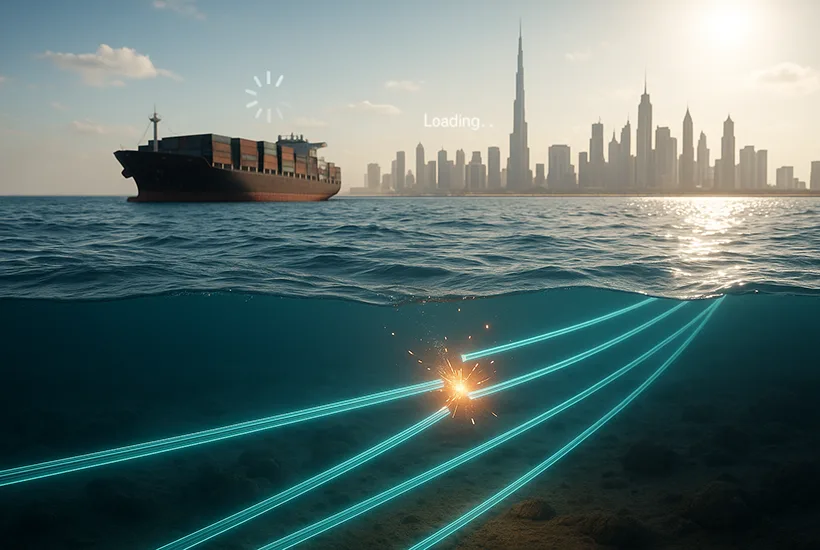- Likely accidental damage from a ship dragging its anchor over shallow subsea cables has benn identified as one of the reasons for the internet disruption in the UAE.
- Experts estimate 2–6 weeks, potentially months, contingent on weather, logistics, and vessel availability as the repair timeline.
- Mitigation efforts like traffic rerouting via alternate infrastructure may give some respite but slow internet and higher latency in the UAE will continue.
Internet users across the UAE and wider region have experienced service slowdowns following cuts to critical undersea cables in the Red Sea. Experts are now saying that the disruption is likely due to a shipping accident, according to the Associated Press.
According to an AP report, analysts believe a commercial vessel dropped anchor and inadvertently dragged it across vital fiber-optic lines near the Bab el-Mandeb Strait. This particular spot is a chokepoint through which fifteen submarine cables traverse. Affected systems include the Southeast Asia–Middle East–Western Europe 4 (SMW4), India–Middle East–Western Europe (IMEWE), FALCON GCX, and the Europe India Gateway cables.
John Wrottesley, operations manager at the International Cable Protection Committee, noted that anchor-related damage accounts for approximately 30% of yearly submarine cable incidents. This has resulted in around 60 faults worldwide. Similarly, Doug Madory, internet analysis director at Kentik, was of the opinion that even though no service has been entirely lost, a noticeable reduction in international transit capacity has caused increased latency across countries like India, Pakistan and the UAE.
Newsletter
Get weekly updates on the newest crypto stories, case studies and tips right in your mailbox.
Repair time could run into months
A report in The National suggested that repairing of such subsea cables is a slow, long-drawn process. Dubai-based specialist, Dr. Sarath Raj of Amity University, quipped that the ordeal is likely to take anywhere between two to six weeks. This will require location pinpointing, lifting the cable, splicing, and testing, and all this would depend on the weather and vessel availability, too.
Another report in the Khaleej Times quoted Yasser Saied, consulting systems engineer at Palo Alto, who warns that because only a handful of firms globally can perform such deep-sea operations, the repair could well stretch into months.
For now, alternate routing via other cable systems and terrestrial links has mitigated a full-blown blackout. Users, however, will still face degraded speeds and higher latency. Telecom providers in the UAE, that is Du and Etisalat, have confirmed slowdowns, and Microsoft’s Azure platform has rerouted traffic but warned of disruptions. But the incident has put the spotlight on the vulnerability of global internet infrastructure, as high-capacity submarine cables remain the backbone for international data flow.












